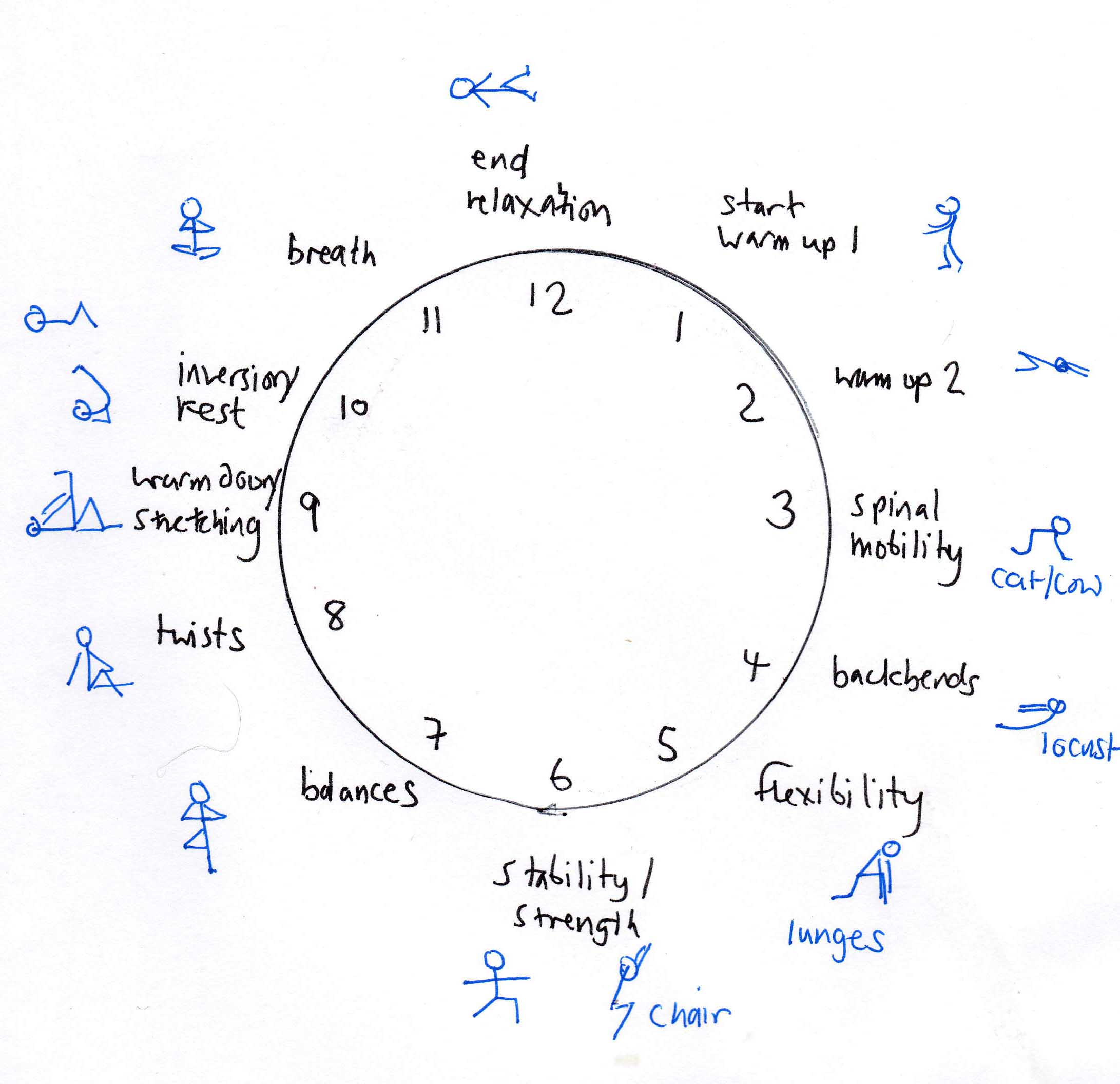Published: Jun 17, 2017 by Lucy Tennyson
Taking the body upside down is thought to have a positive effect on four of the major systems of the body: cardiovascular, lymphatic, nervous and endocrine. The medical benefits are always debatable of course, but certainly resting in a simple inversion with the legs raised against a wall or resting on a chair seems to help restore the body.
Reversing the venous flow (of blood back to the heart) might additionally help with varicose veins, as well as give a refreshing flow of blood into the head. Taking the legs up also affects the way the lymph moves, allowing it to drain in a downwards direction.
However, taking the head below the heart should only be done for short periods of time to start with: don’t if it makes you feel dizzy or if you are susceptible to migraines or eye problems such as glaucoma.
We began our session on yoga inversions this week lying on our backs and taking the knees into the chest, and then moving into ‘happy baby’ – two gentle inversions. Lying with the spine and neck supported flat on the floor has other benefits, such as extending the spine, and relaxing back muscles.
Downward dog is a little stronger in that it takes the head below the heart; it also helps spinal extension, and improving upper body strength.
Building strength in the arms and shoulders to take the weight of the body and legs when we go upsidedown is absolutely essential to the safe practice of stronger postures such as shoulder stand, headstand and handstand.
That’s why we worked on a sequence of shoulder openers and strengtheners. It may take a few weeks/months to build up strength in the arms and shoulders - if you cannot hold downward dog easily before attempting shoulder stand, don’t do it. First use the wall for support when you start shoulderstand.
Likewise with headstand, just practise placing the head on the floor, and experiencing what it feels like. Make a triangular base with the arms to support the head if you start to lift up into a dolphin shape.
It pays to be patient in your approach, and never persist if you experience any kind of discomfort or pain in the neck. Restorative poses such as Viparita Karani (legs-up-the-wall pose) and a supported Setu Bandha (bridge) will give you most of the benefits of head and shoulder stand, without stressing the cervical spine.
This website https://www.ekhartyoga.com/articles/all-about-yoga-inversions
offers some useful information about inversions with links through to specific poses.
